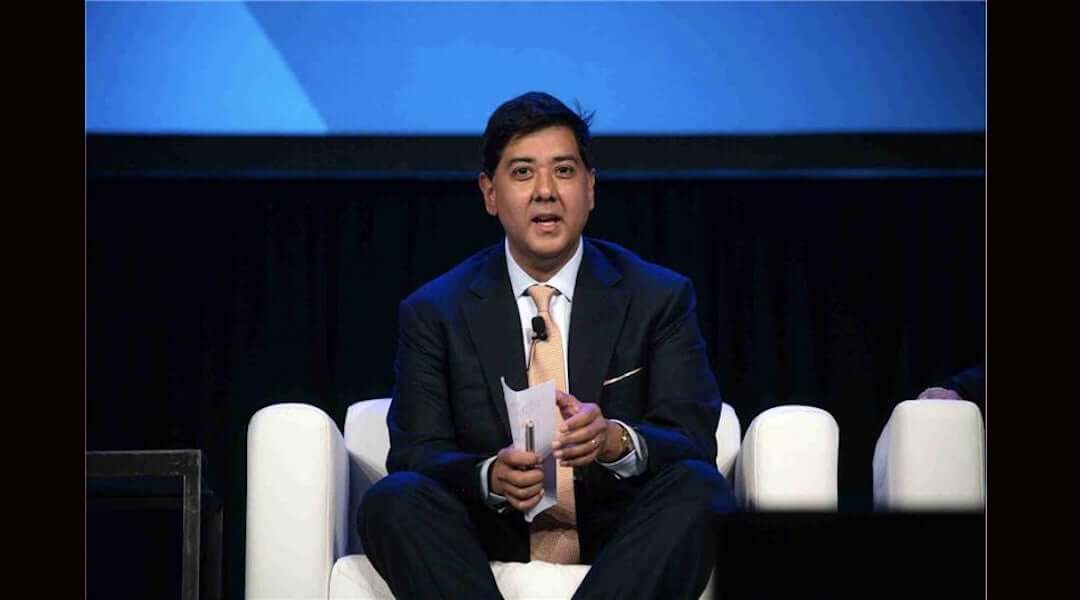Why Does No One Care That China Is Ethnically Cleansing Uighur Muslims?

Muslim ethnic Uighurs protest in Urumqi in China’s far west Xinjiang province on July 7, 2009. Police fired tear gas to disperse thousands of Han Chinese protesters armed with makeshift weapons and vowing revenge, as chaos gripped this flashpoint city riven by ethnic tensions following rioting that claimed at least 156 lives. Authorities ordered a night curfew and thousands of heavily armed police deployed across Urumqi. Image by Getty Images
In 1948, the international community enshrined the promise of “Never Again” into international law when the United Nations General Assembly passed the Genocide Convention. Still reeling from the industrial scale mass murder that took place on both the European and Asian continents between 1936 and 1945, UN member states agreed to prevent and punish fellow members who seek the systematic extermination of victims who belong to religious, ethnic, or racial minority groups deemed “undesirable” by the perpetrator.
Tragically, however, the remains of tens of millions of Cambodians, Rwandans, Iraqi Kurds, Bosnian Muslims, Darfurians, and Rohingya Muslims demonstrate the depressing gap between the international community’s promise and its practice.
And while there’s no evidence, at least for now, that China is carrying out or planning genocide against 12 million Uighur Muslims in Xinjiang, or what was once independent East Turkestan for a couple of hot minutes in the 1930s and 1940s, the international community’s muted response to the Asian power’s ongoing and escalating effort to ethnically cleanse western-most China of its indigenous inhabitants and their culture is yet another awful reminder “Never Again” has become “Again and Again.”
The scale and intent of China’s repressive measures against the Uighur people bears all the hallmarks of the 20th century’s worst pogroms, including the construction of a network of concentration camps, which have been identified by satellite imagery, and forcibly house upwards of two million Uighur Muslims for such “crimes” as praying, fasting, attending a mosque, speaking native tongue, wearing the hijab, having a full beard or carrying the Qur’an. Accounts of torture, murder, executions, and forced disappearances are as harrowing as they are widespread.

Uyghur Muslims Image by Getty Images
Last month, a leaked database painted a clear picture of exactly how draconian and dystopian China’s crackdown on Uighur Muslims has become during the past year or two, with GDI Foundation, a non-profit that advocates an open Internet, revealing Chinese authorities have implemented a “Muslim tracker,” one that currently locates the movement of 2.5 million Muslims in Xinjiang using facial software recognition.
Why is the international community doing almost nothing to stop what has been described as the world’s largest campaign of ethnic cleansing?
It’s tied to why China is perpetrating it. For most of the past 70 years, China was content to let Uighur Muslims live and be mostly free of Beijing’s rule, with the Communist Party leadership concerned primarily with developing and expanding the economy of the Chinese heartland — the densely populated great plains that span the eastern portion of the country, running from the Yellow River in the north to the Yangtze river in the south.
Now that China has emerged as the world’s second largest economic power, it’s increasingly becoming focused on developing both its defensive and offensive military capabilities, and when Beijing looks at Xinjiang on a map, it sees a region containing mostly non-Han Chinese, and one that shares a border with eight countries and lies at the center of the government’s “One Belt, One Road” economic strategy.
To counter or dilute Uighur predominance in the region, China began migrating Han Chinese workers in the late 1990s to Xinjiang, giving them the majority of oil and gas jobs.
Uighur Muslims protested Beijing’s preferential treatment to Han Chinese workers over the local population, culminating with the 2009 Urumqi riots, which left more than 140 dead. That’s when China, fearing the emergence of a Uighur separatist movement, launched its crackdown.

A Chinese woman weeps on a road in Urumqi on July 5, 2010 as she burns offerings in the place where one of her relatives was killed during the bloody violence that erupted between the region’s Muslim ethnic Uighurs and members of China’s majority Han ethnicity in the city one year ago Image by Getty Image, Getty Images
The international community’s inaction has a few causes. First and foremost is the fear Middle Eastern and Asian countries have of China’s ever growing and enormously powerful economic might, one Beijing wields effectively as both carrot and stick.
Pakistan is an illuminating case in point. It boasts being a sanctuary for Muslims in Asia, and yet it’s gone to some lengths to defend China by claiming, without evidence, that accusations of Uighur Muslim concentration camps are “sensationalized by the media” and based on “false information,” while newly elected Pakistan Prime Minister Imran Khan feigned in a recent interview he didn’t “know much about the conditions for Uighur Muslims in China.”
It’s not a stretch to believe that China’s move to invest US $46 billion in Pakistan’s economy, a cash injection that has been described by Pakistani government officials as a “game changer” for the country, has much to do with its willingness to obfuscate the ethnic cleansing of the Uighurs.
Then there’s the fact that global leaders, particularly in Asia and the Middle East, view the United States as a declining — or rather, a disinterested — power, one that is abandoning its long-standing commitment to alliances and security guarantees in favor of an isolationist “America First” ideology. This puts allies in a position whereby they feel they must balance a US retreat by offering Beijing friendly overtures.
Other factors that explain the international community’s callous indifference towards the Uighur is the tight control Chinese government has over all media, including social media, in the country, which deprives the world seeing the kind of visual images that would propel whole populations around the globe into taking up pro-Uighur activist causes.
And China has successfully intimidated Uighur expatriate communities around the world into silence, with the presence of Chinese government informants felt and known by all dissidents.
“As soon as you arrive somewhere, Chinese spies will take a photo of you and they’ll send it back and they’ll threaten your family members until you stop protesting against China, who is now missing after returning to China from Turkey in November of last year, explained to me.
Others, such as Nithin Coca, contend there are “subtler reasons” Uighur Muslims are being ignored, including the fact it’s relatively easy for the Muslim world to turn a blind eye to the plight of the Uighurs because they exist on the “edge of the Muslim world,” as opposed to the Palestinians, for instance, who reside within Islam’s holiest cities.
Others argue a “Free Xinjiang” movement hasn’t caught fire the same way the “Free Tibet” movement has among the Western left because Uighur Muslims lack a charismatic Dalai Lama like figure.
If the international community is to fulfill its promise of “Never Again,” or at the very least give the appearance of trying, then it can no longer afford to sit idle as the lives and culture of 12 million Uighur Muslims is being slowly snuffed out in China’s concentration camps.
CJ Werleman is a journalist, columnist, and security and terrorism analyst.
















